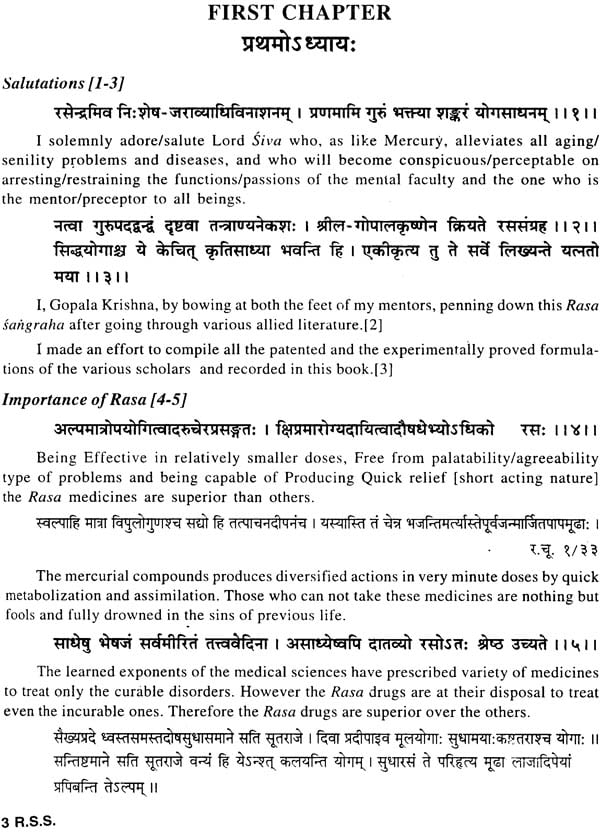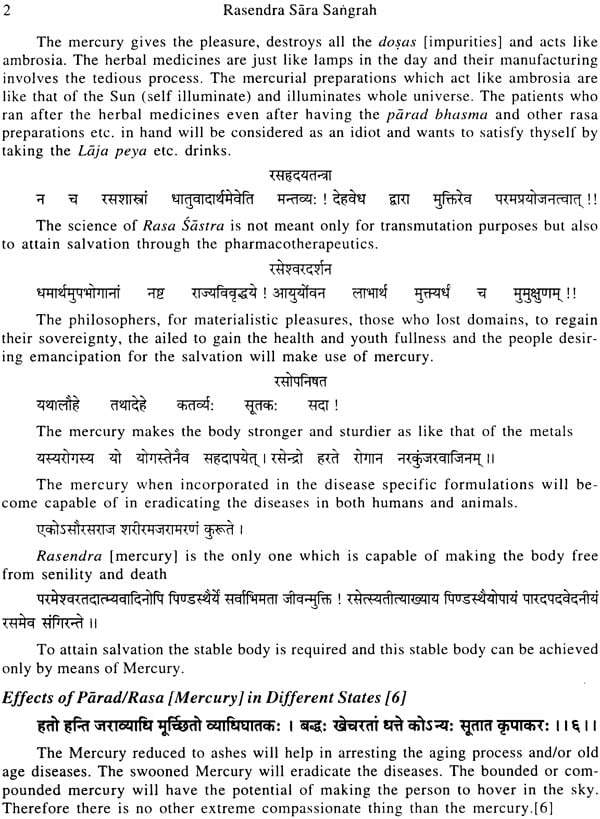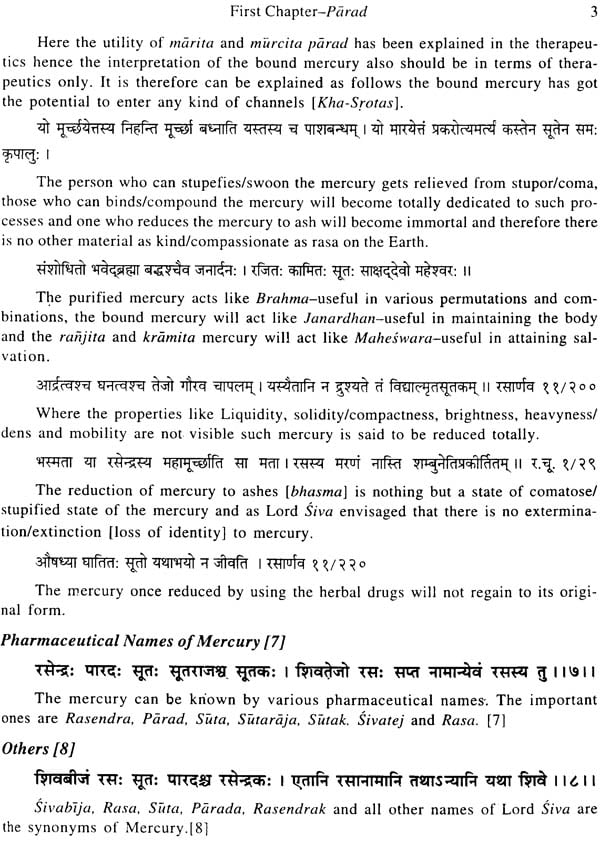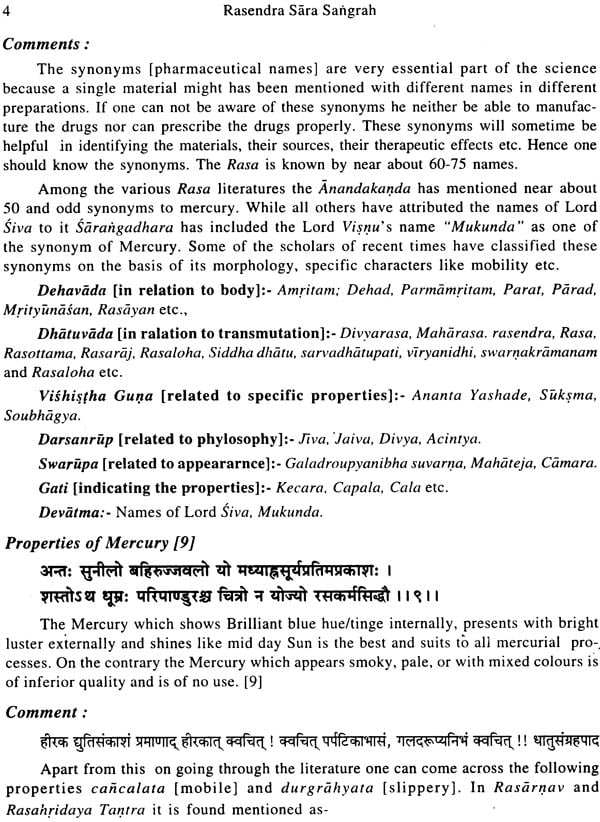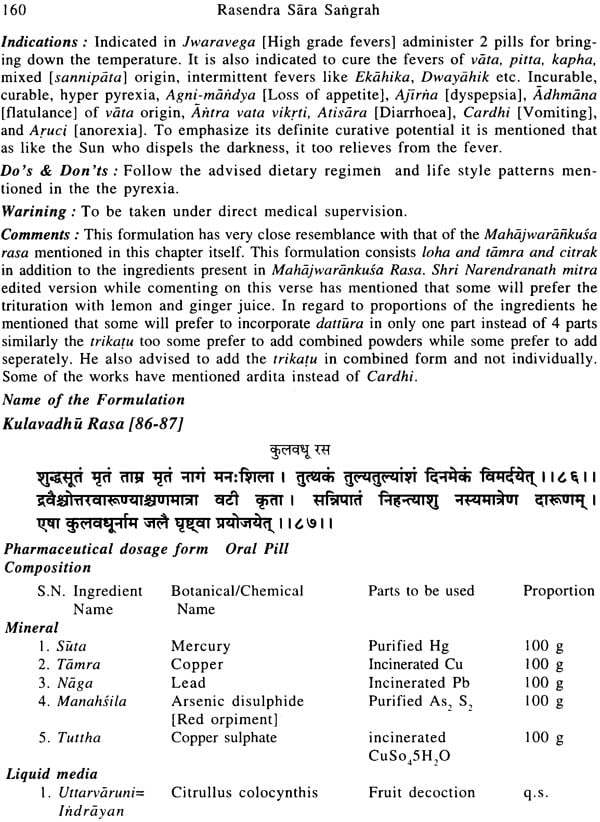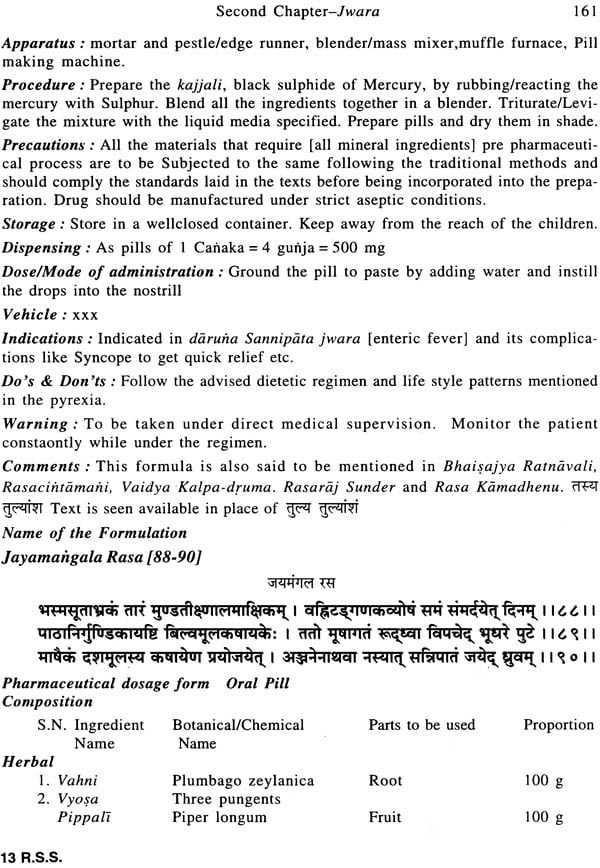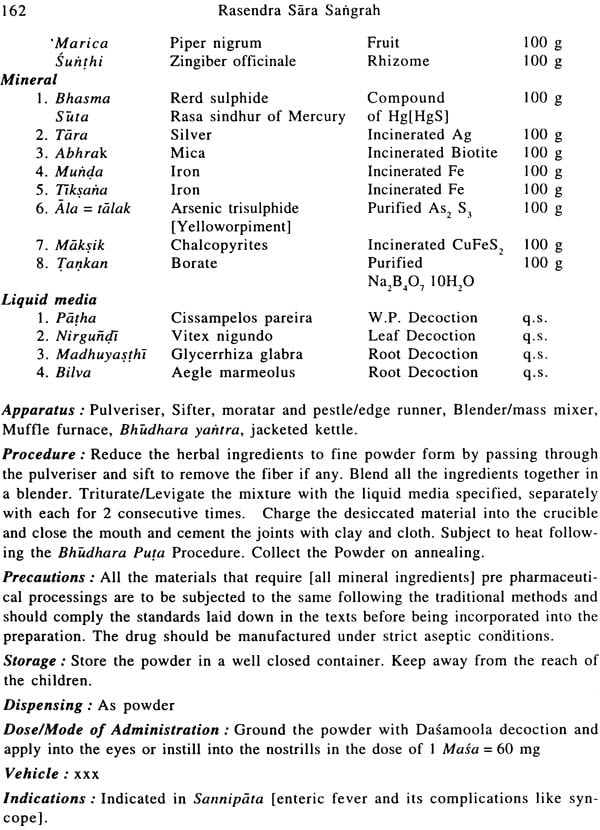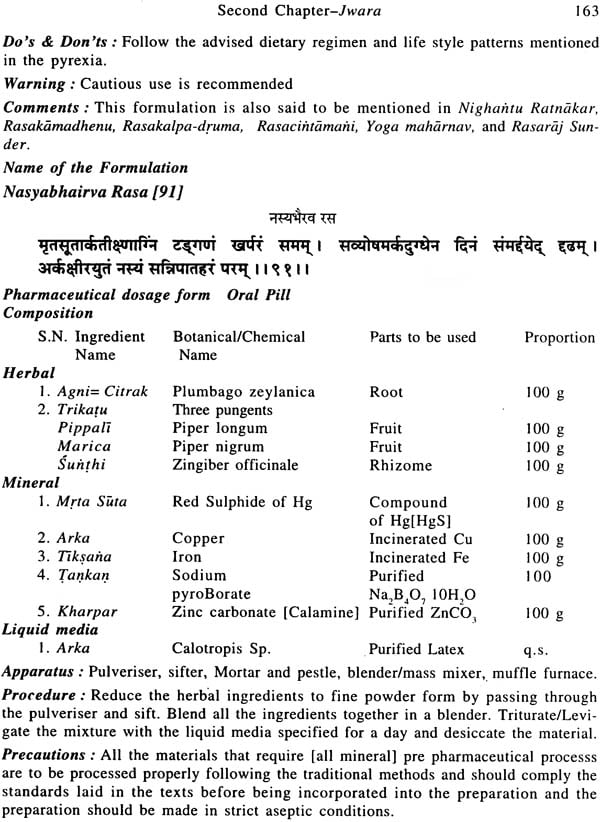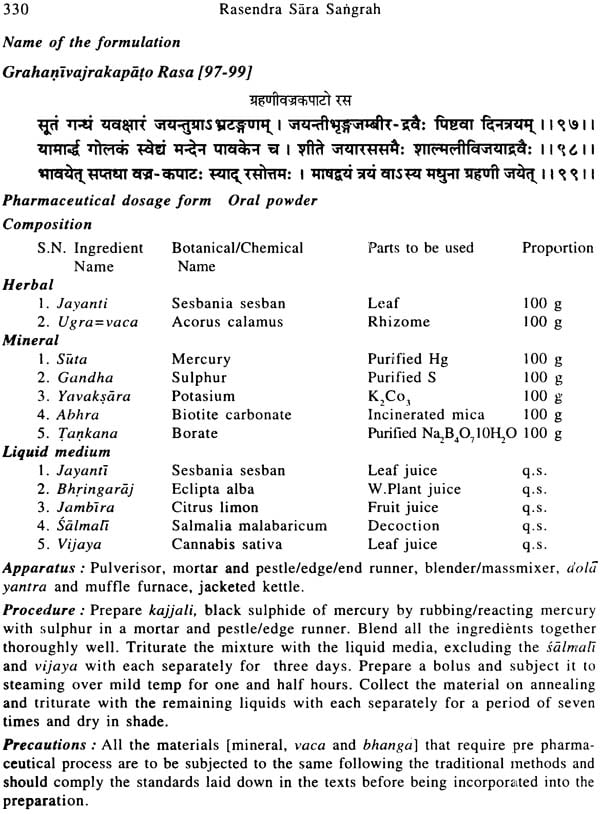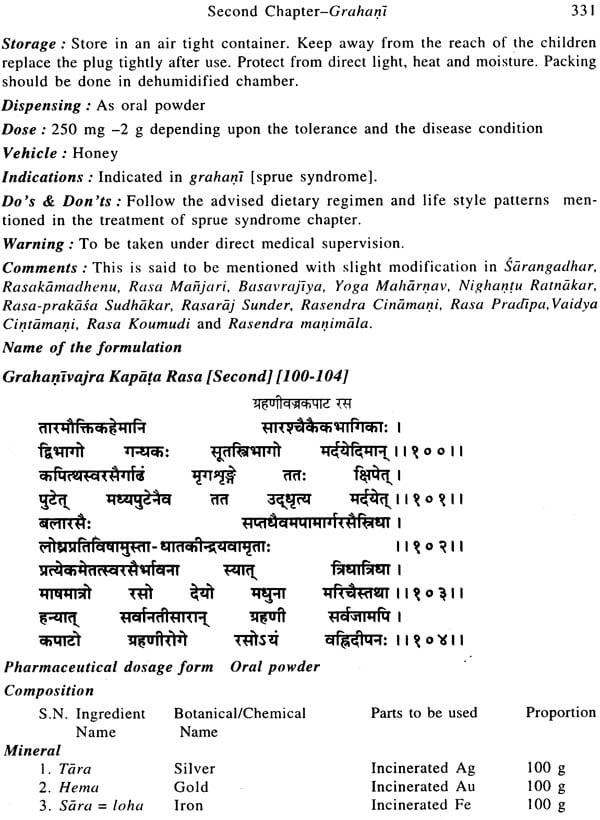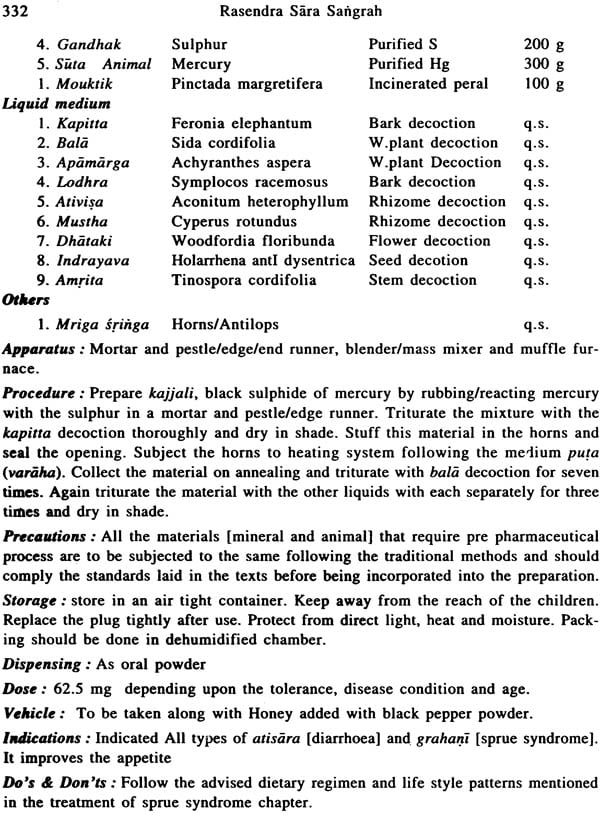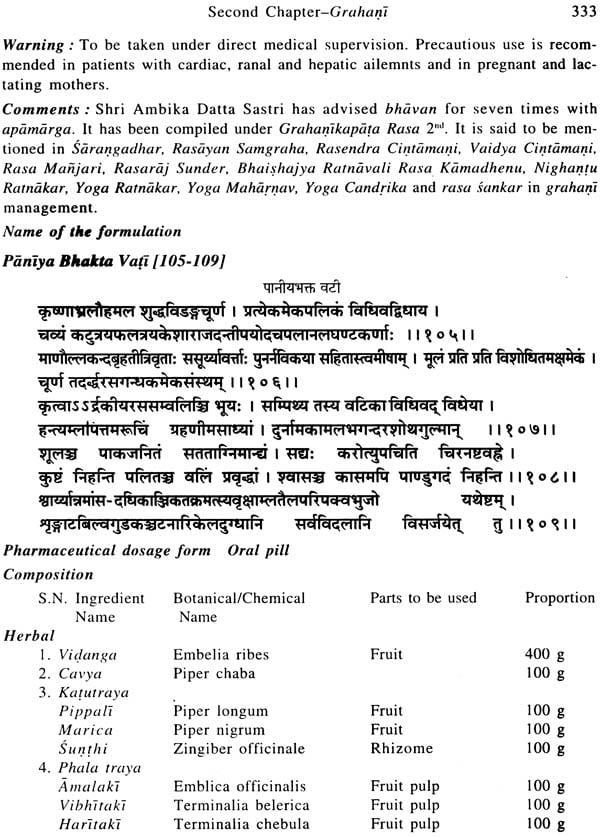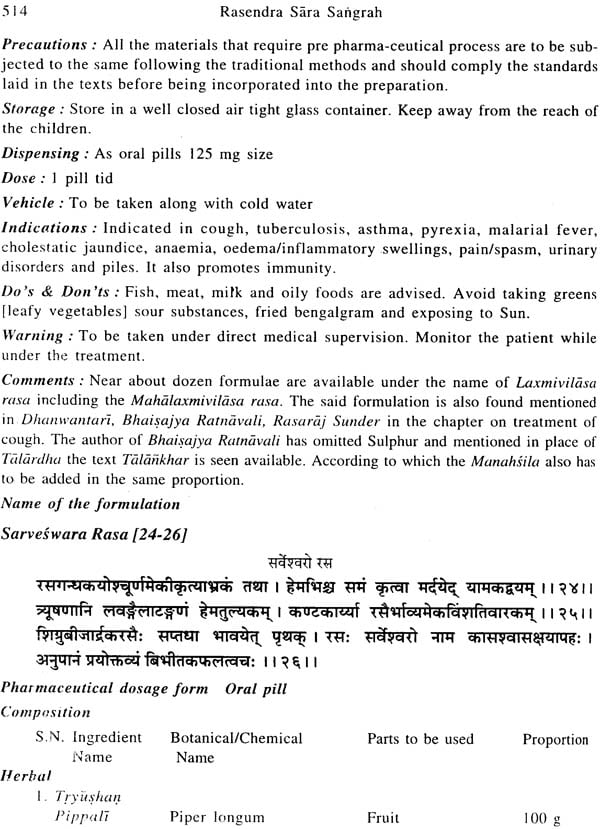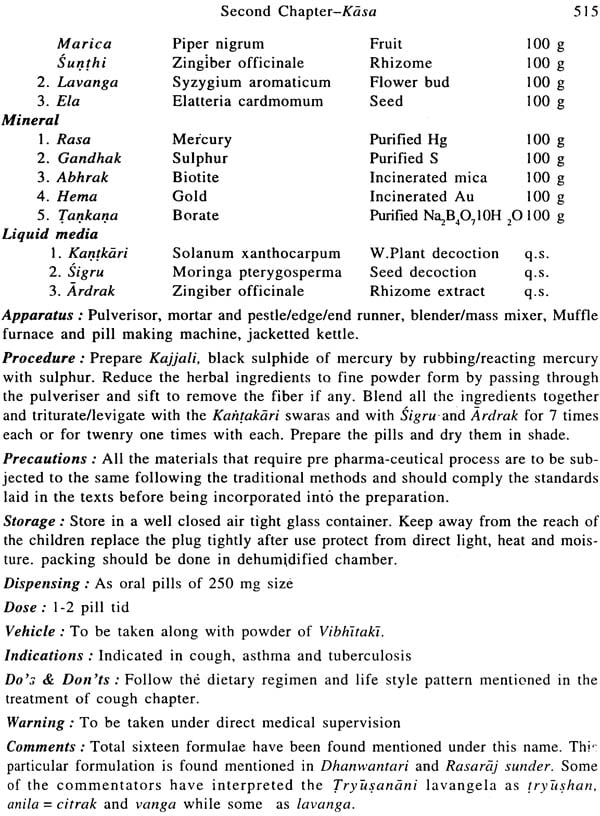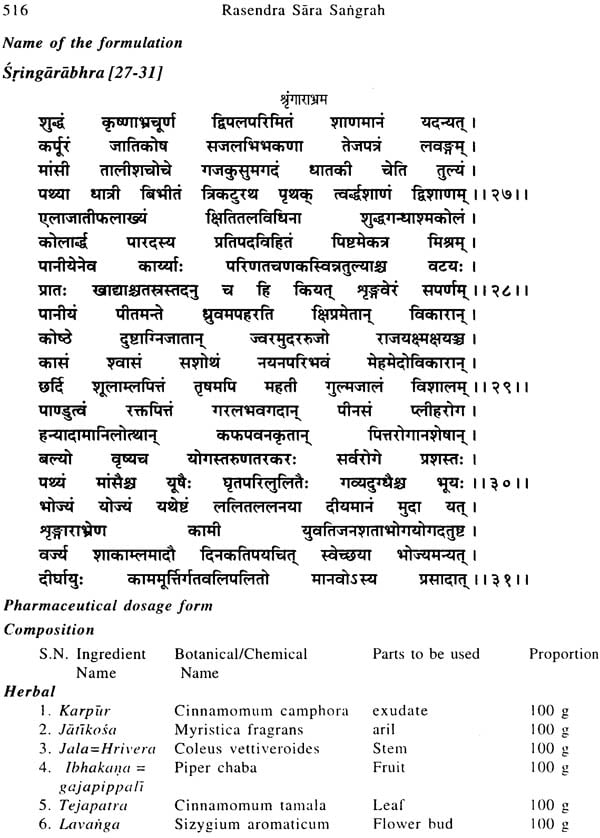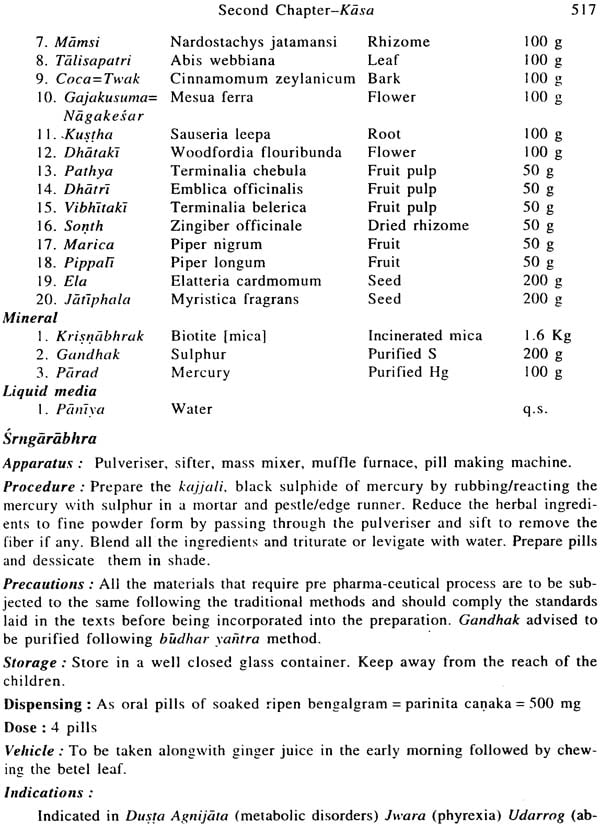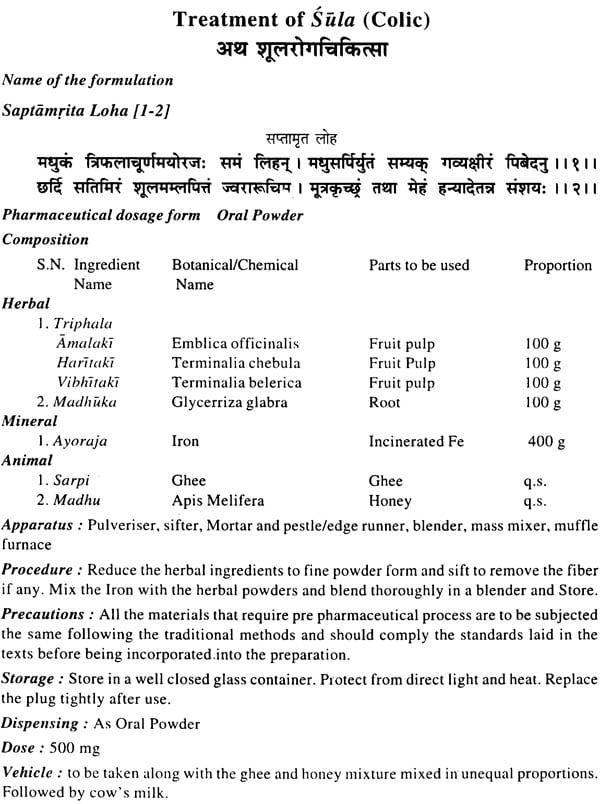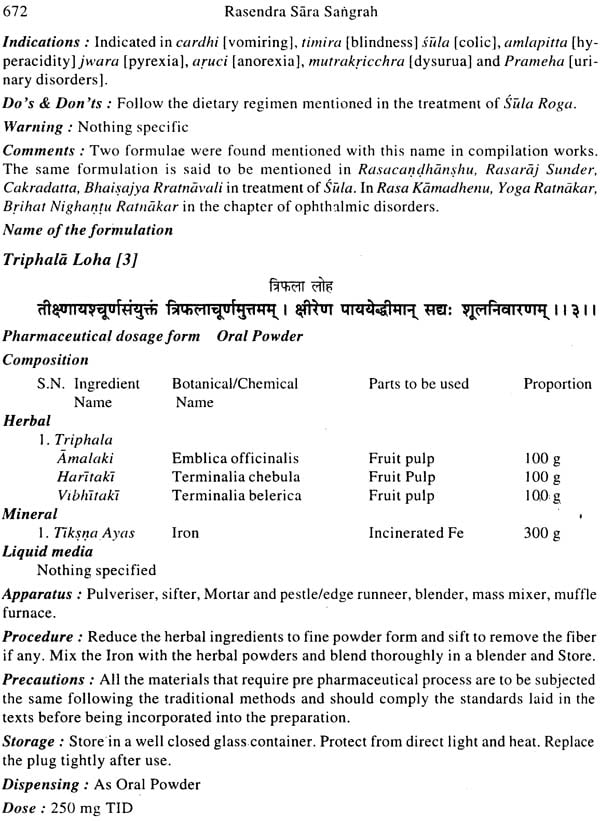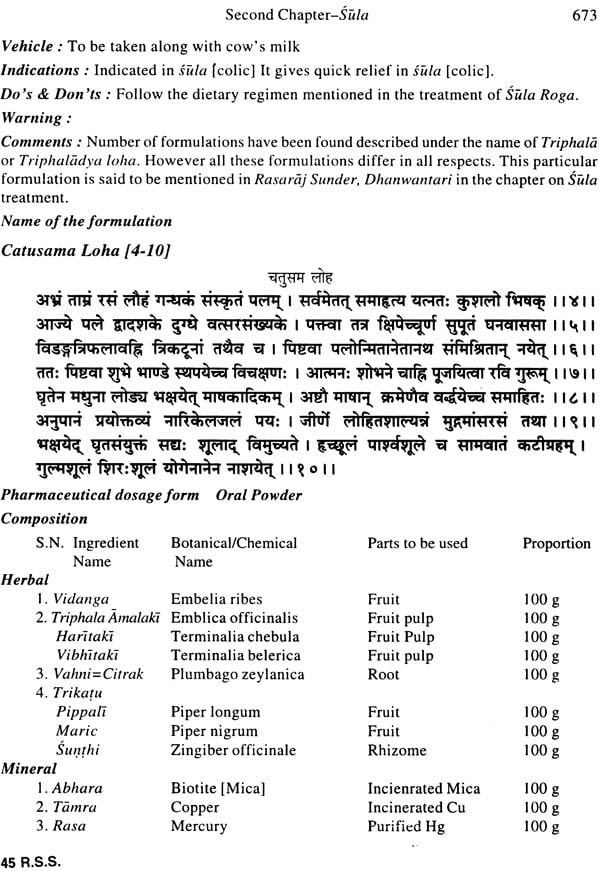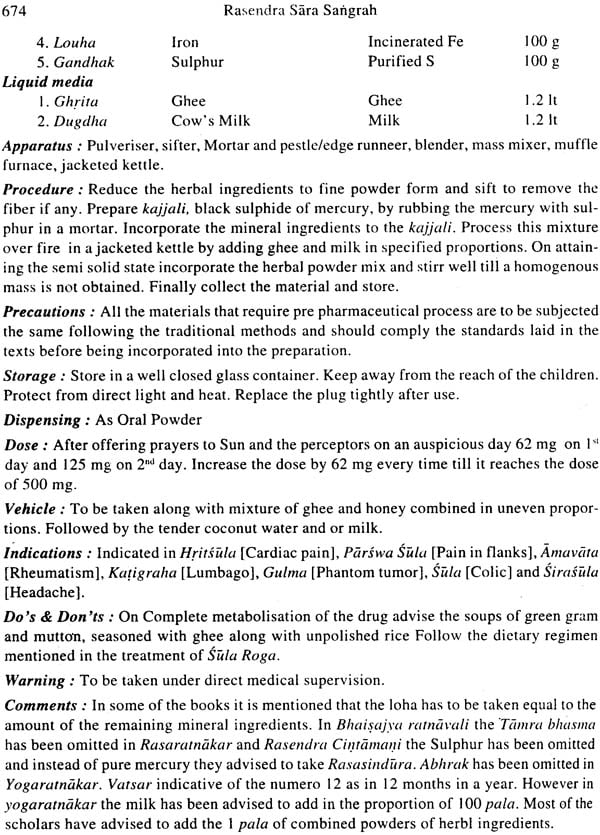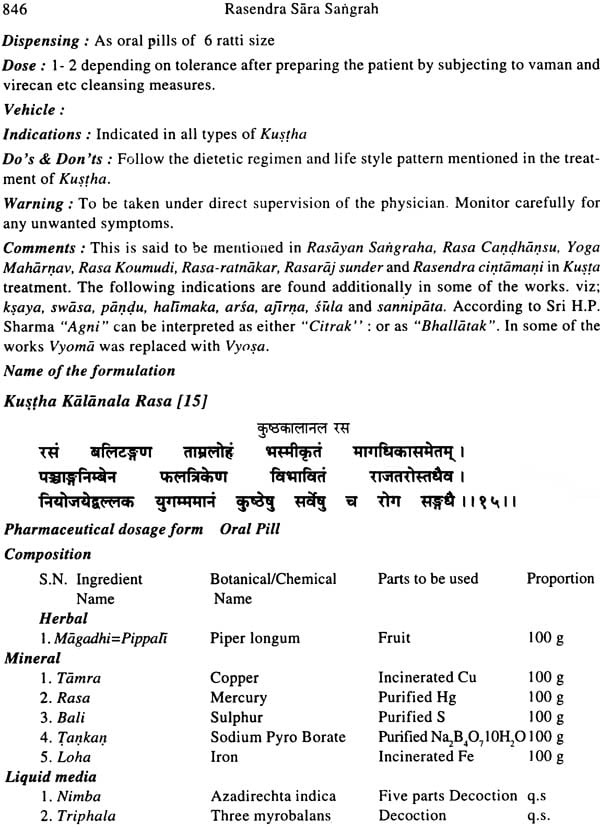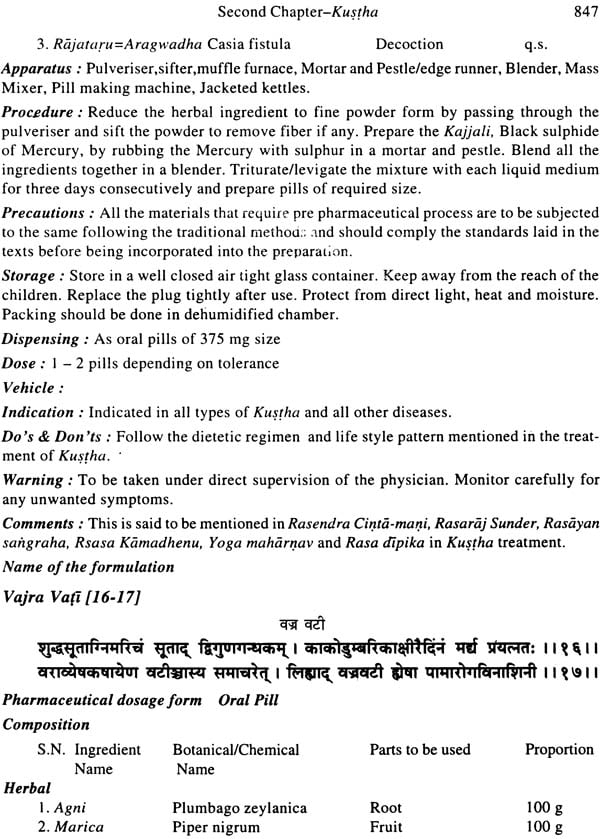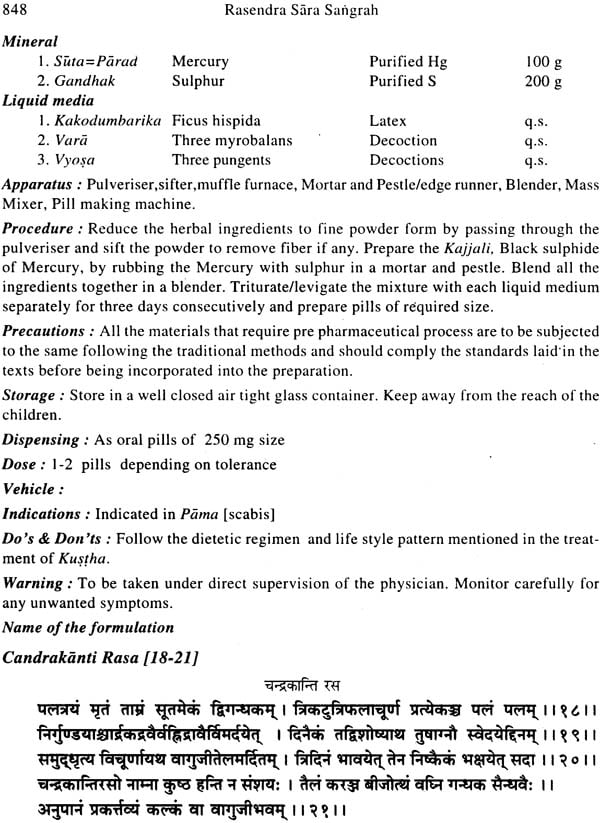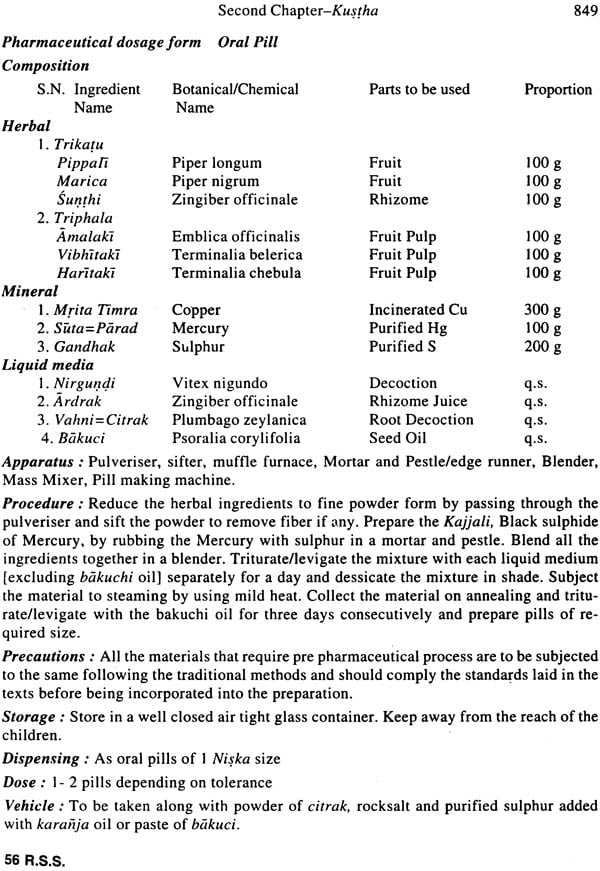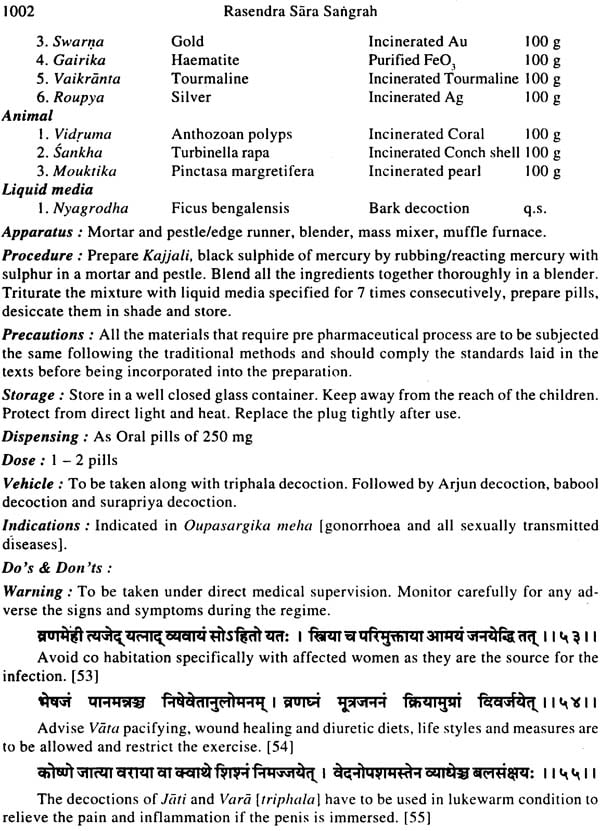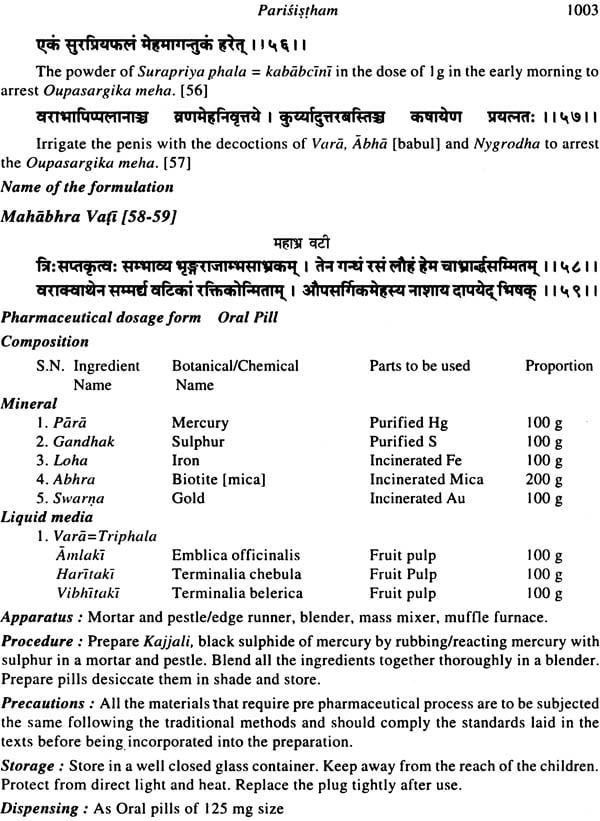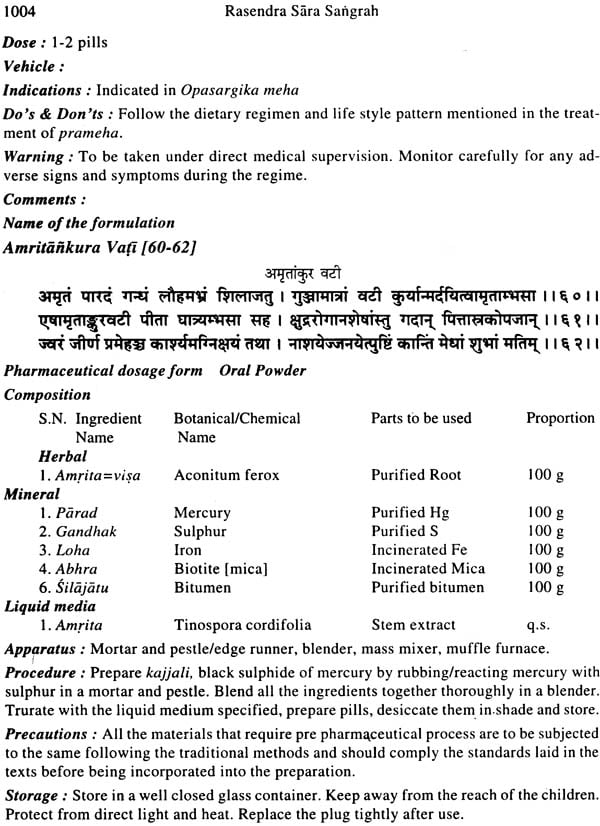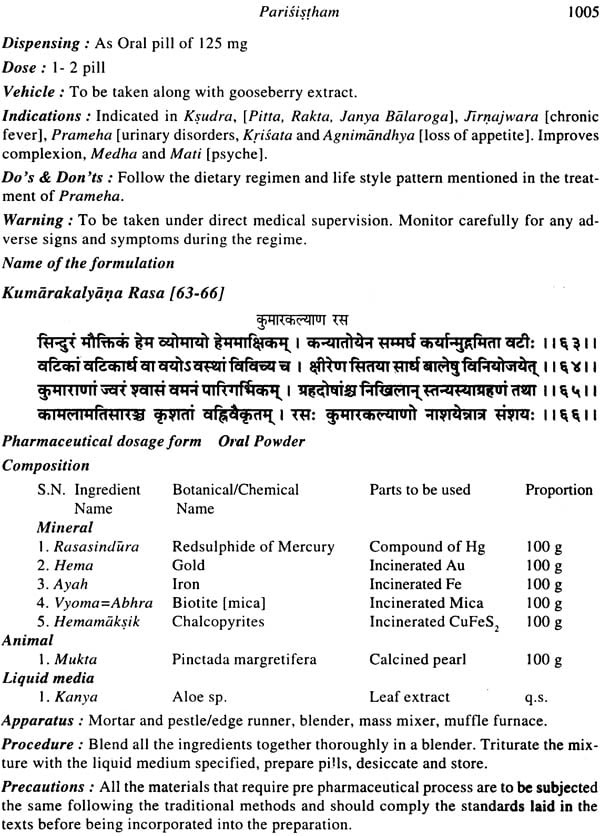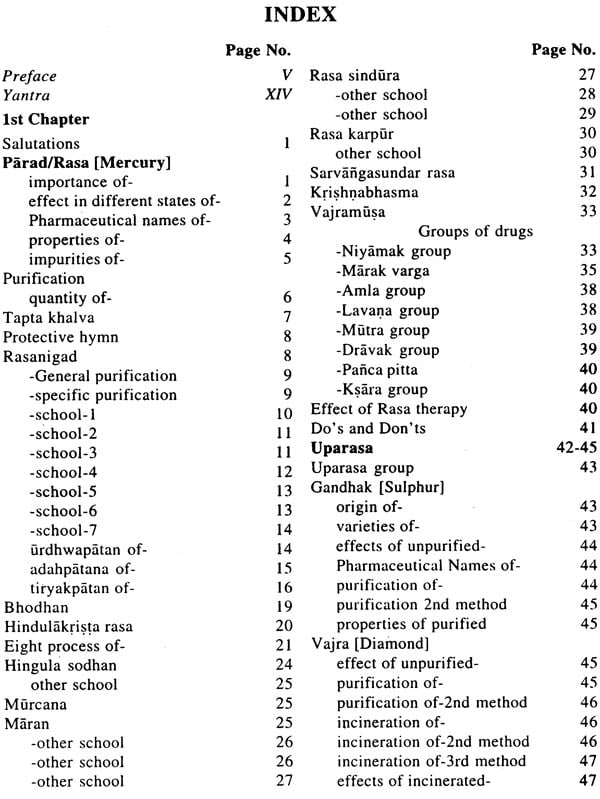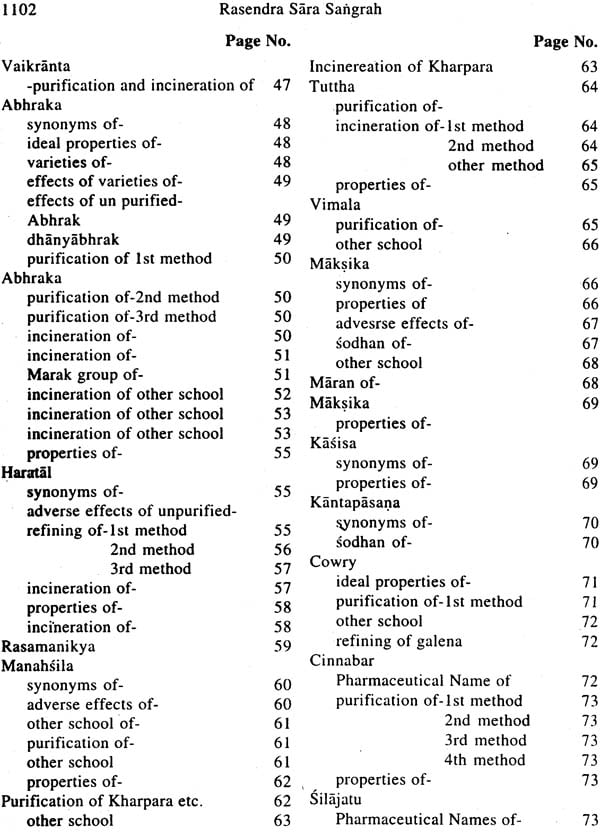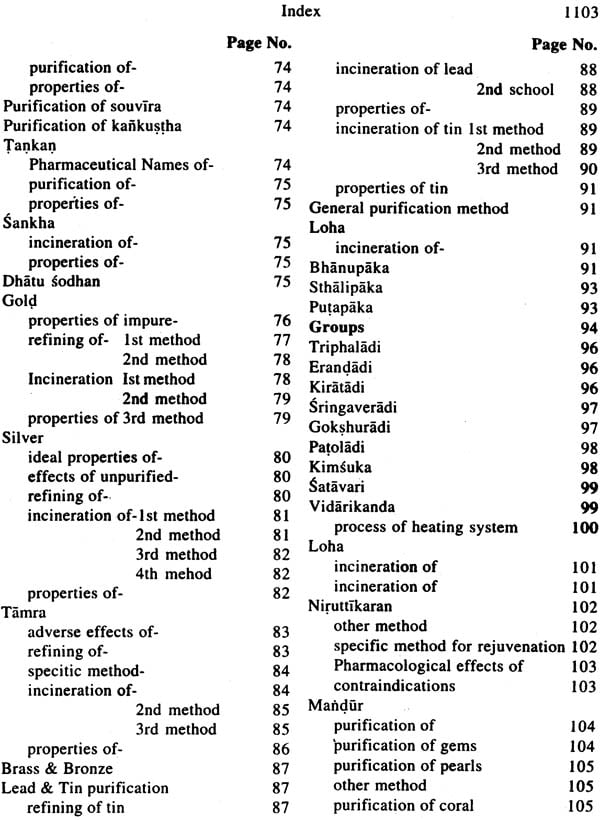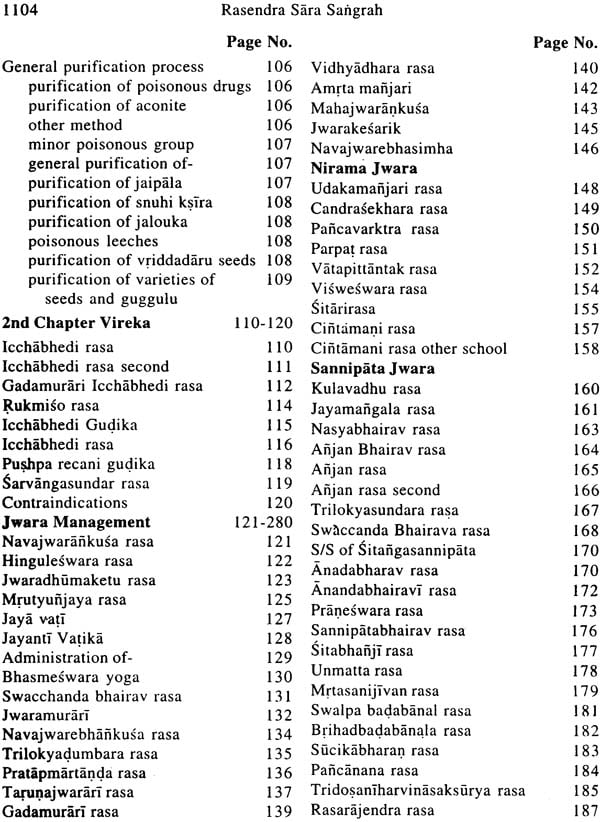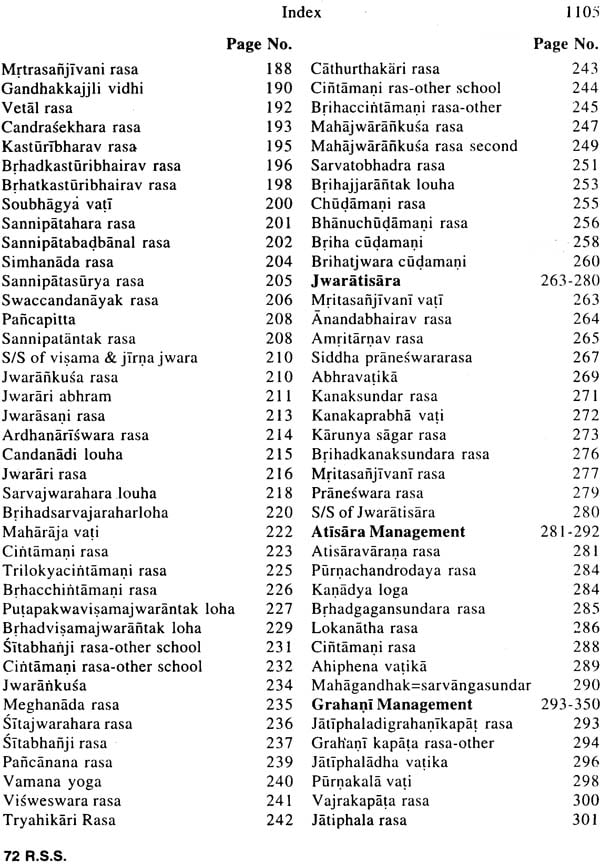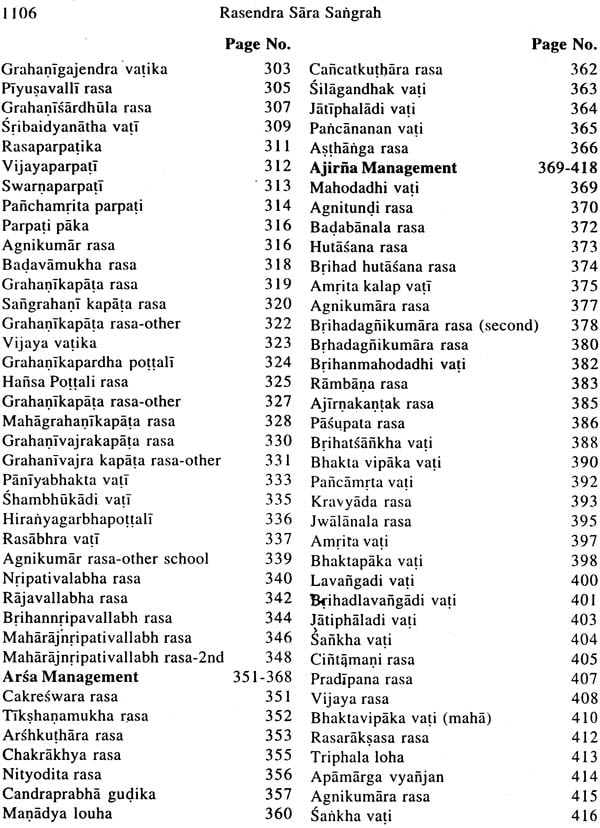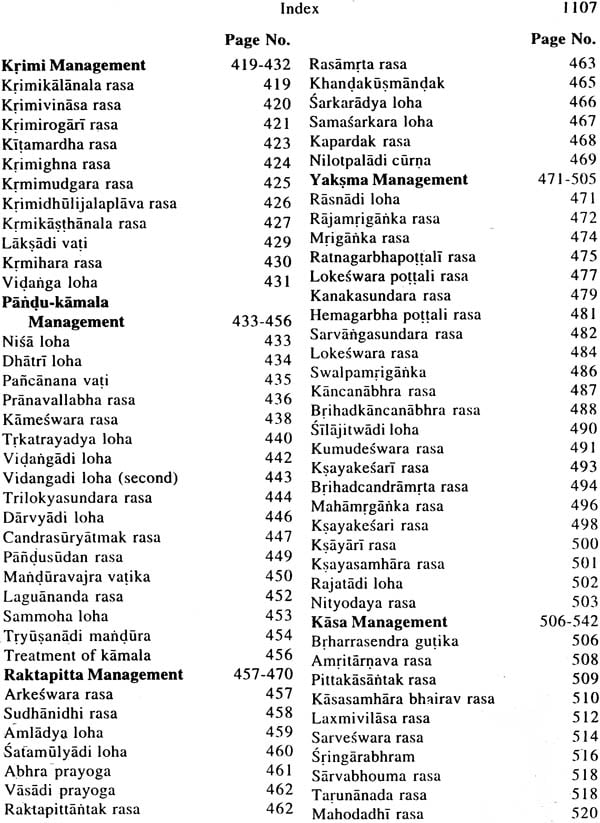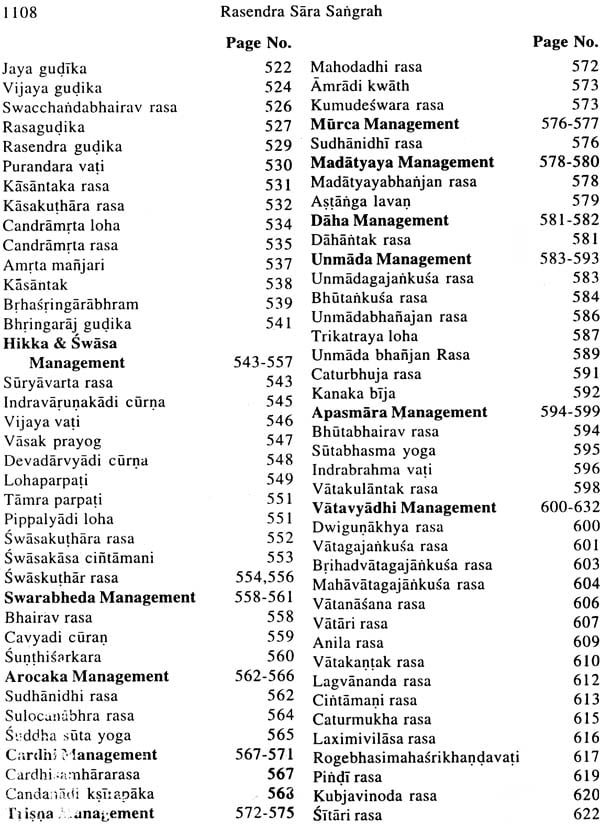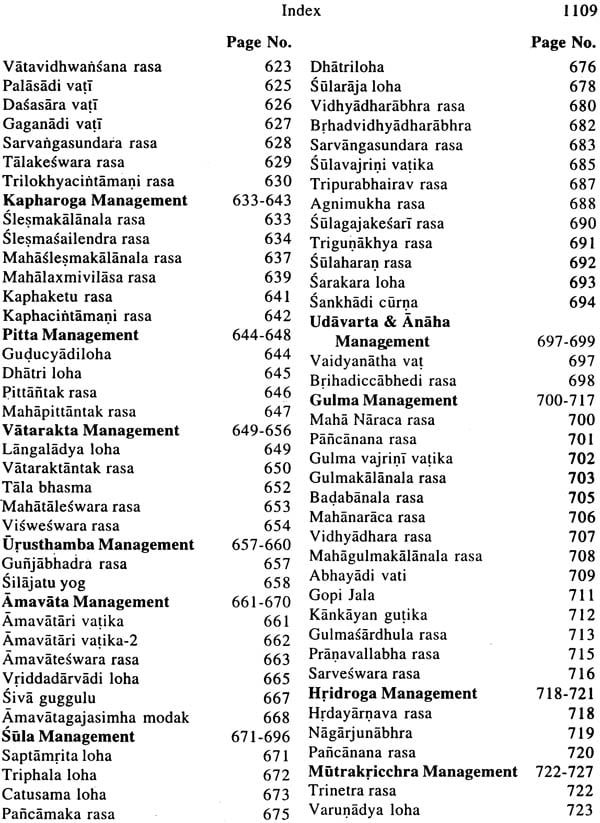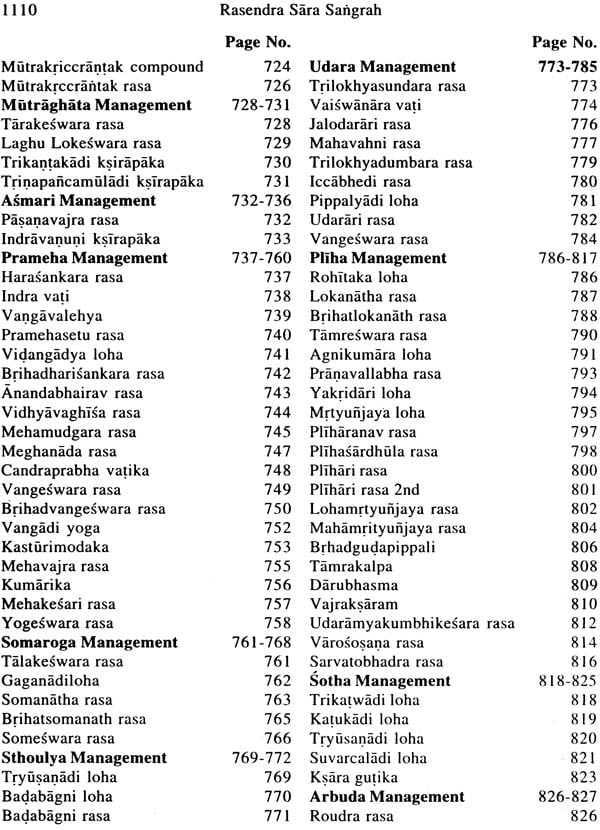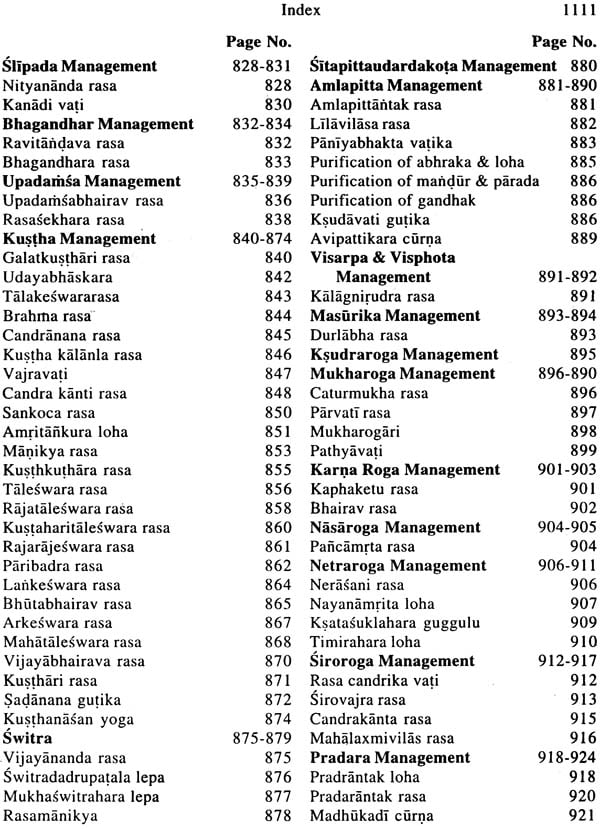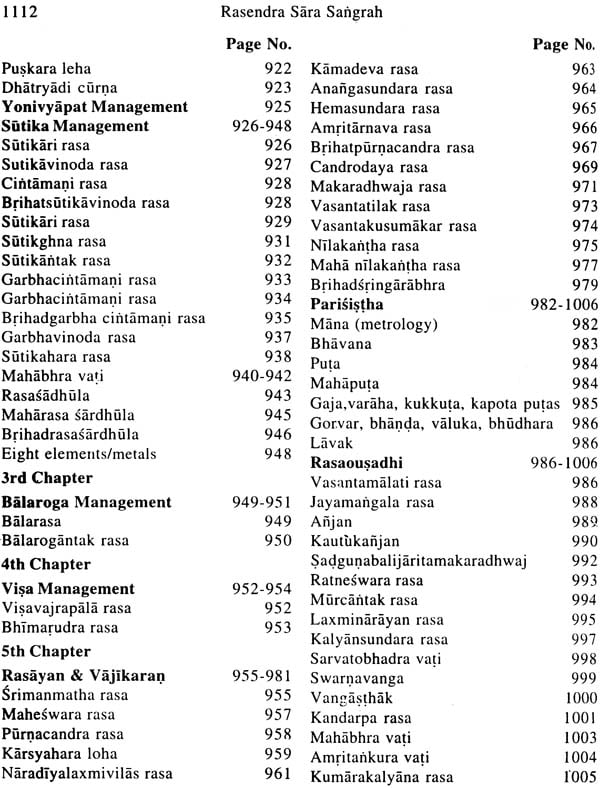
Rasendra Sara Sangrah of Sri Gopal Krishna Bhatt
Book Specification
| Item Code: | IDJ968 |
| Author: | Dr. Parimi Suresh and Dr. Vinaya Kumari Dhannapuneni |
| Publisher: | Chaukhambha Sanskrit Sansthan |
| Language: | (The Text with English Translation Parimita Bhodhini Commentary & Appendix) |
| Edition: | 2007 |
| ISBN: | 9788189798055 |
| Pages: | 1112 |
| Cover: | Hardcover |
| Other Details | 9.6" X 7.3" |
Book Description
From the Jacket
Dr. Parimi Suresh S/o Sri. Parimi Durga Prasada Rao is born in Vijayawada Andhra Pradesh. Gradu-ated from Dr. N. R. S Govt. Ayurvedic Medical College, Vijayawada. Selected in 1st attempt in both reputed universities of Ayurveda and com-leted Post graduation in Rasa Shastra in the year 1985 from BHU. In 1990 received Doctorate from BHU. He has been awarded with Nagar-juna Silver Medal for his M. D. [Ay] thesis work.
Served BHU in the capacity of Demonstrator and Tribhuvan University in the capacity of Lecturer, Ayurved Campus, Kathmandu, Nepal on W.H.O. fellowship. Held high positions in both modern and classical pharmacies.
Translated "Vaidyak Paribhasha Pradeep" into English which was eventually published by Chaukhambha Sanskrit Sansthan, Varanasi. Published more than 35 papers in various journals.
Presently working as Assistant Professor, Department of Rasa Shastra and Bhaishajya Kalpana, National Institute of Ayurved, Jaipur.
Forthcoming Titles: (1) Parpati Kalpa-A Pharma-ceutical Dosage Form (2) Allovedic Concepts of Zine.
Dr. Dhannapuneni Vinaya Kumari W/o Dr. Parimi Suresh is born in Karim Nagar, Andhra Pradesh. Graduated from Sri Ananta Lakshmi Govt. Ayurvedic Medical College, Warangal. Stood 1st in 1st attempt in M. D. Entrance at B.H.U. Post graduated from BHU under great stalwart in the field of Prasuti & Stree Roga Prof. P.V.Tewariji and received Doctorate in Prasuti in 1999.
Served Tribhuvan University in the capacity of Lecturer, Ayurved campus, Kathmandu, Nepal on WHO fellowship. Also served BHU in the capacity of Senior resident. Near about 15 papers were published in various journals.
Presently working as I/C Head, Department of Prasuti & Stree Roga, A&U Tibbia College New Delhi.
Foreword
It gives me immense pleasure to go through this voluminous translation work on "Rasendra Sara Sangraha" by Gopal Krishna Bhatt. The Translators are young and energetic scientists and have received their doctorate degrees from prestigious 'Banaras Hindu University', Varanasi. It is evident that translating the present work is very strenuous. This very poplar book belongs to 14th century A. D. and is dedicated to Rasa Shastra with practical approach. Number of commentaries are available on this work but most of them are either in Hindi or in Sanskrit. The English translation is still wanting until recent times. Recently one English translation has been published yet this particular English translation is unique by way of having simple emphatic and true to content and is thus superior to all the other available translations. The present translation makes easy in understanding and is in most respects based on the pattern of Ayurvedic Formularly of India. This enhances the authenticity of the book. The technical terms, the commentary and the appendices are assets of this translation. It also embodies some of the valuable experiences aiming at providing learned authors wide experience in parmaceutical industry and teaching institutions has made this book a valuable guidance for both the student also the entrepreneurs vis-à-vis researchers and there by to bring this translation in a user's domain.
This translation really fulfills the needs of not only the student community but also the physicians, teachers, researchers and the pharmaceutical entrepreneurs in India and world over.
I appreciate and congratulate the translators for their commendable pain taking work and wish them bright future and success in life.
May God bless both the authors.
Foreword
I have pleasure in writing these few lines as a foreword to the nicely translated work on Rasendra Sara Sangraha. The book has been translated by Dr. Parimi Suresh & Dr. D. Vinaya Kumari, to suit the needs of the Undergraduate, Postgraduate scholars, Industrial personnel and the scholars of other disciplines. It is evident that this work is the fruit of experience acquired by the authors through many years of hard work, study and teaching.
In recent years the Ayurveda in general and Rasa Shastra in particular has developed immensely although the teaching of the subject in almost same what it used to be about 2-3 decades ago. This lag and deficiency in our teaching is mostly due to the absence of proper translation and commentaries consisting the modern techniques and technologies. The authors, therefore, boldly undertook the task of producing an up-to-date translation incorporating newer material.
I am happy to say that the scholars have accomplished the difficult task very creditably. I hope this book will be helpful to the student for whom it has been translated. Undoubtedly it will receive the well deserved popularity.
Director
National Institute of Ayurveda
Back of the Book
Rasendra Sara Sangraha is the oldest and most exhaustive treatise of Rasa Shastra comprising the compilation of various time tested and therapeutically proved Rasayogas [medicines], penned down by a great erudite scholar in the field of Rasa Shastra Shri Gopal Krishna Bhatt. Among the Rasa literature it has got wide popularity as most of the practitioners and others used to follow.
This popular book consists of 5 chapters with near about 2531 verses. The book starts with processing of minerals and metals, following usual salutations, it proceeds further to the manufacturing and therapeutic utilization of the prepared medicines. The purification of mercury has been advised by use of herbal drugs and perhaps it is the first book to explain the rationale method of manufacturing based on the therapeutic utility e.g; Loha Bhasma.
Overall 600-650 Rasayogas have been compiled, among them a few pure herbal formulations have also gained place.
Commercial scale manufacturing of certain drugs like Rasa Manikya etc. are also the contributions of the book.
This English translation of the text rendered by Dr. P. Suresh & Dr. Vinaya Kumari with the critical and explanatory notes Parimita Bhodhini considering the various reading in the text as well as the different interpretations found in the commentaries, following the official format, is itself a versatile and sure will be an immense help for the U. G. and P. G. students as a course book and reference book for researchers, scientists, teachers, pharmacists and multidisciplinary institutions. Appendices and index etc. are the added attraction to the translation.
The struggle for existence has necessitated the man to invent and/or discover the newer things. In this process he learned the art of healing-the designing and manufacturing the medicines. He understood the importance of the physical wellbeing for achieving the means of life. Initially he tried the materials from organic sources and when he noticed that the desired results could not be achieved he started using the inorganics either alone or in combi- nation with organicals and achieved the success. The underlying reason for this success is the structural and functional aspects of the entire body. The body is maintained and manipulated by its inorganic elemental composition, whether it is a major component-the water and the " organic components like carbohydrate, protein etc. or the minor components, which are com- binations of various elements viz. Carbon, Hydrogen, Oxygen, Nitrogen and other elements. The ash furnishes the elemental content of the body, which is about 4.35% in an average human body of which 4/5lhis in skeleton and 1% in organs. These elements are not only essential to human beings but also to the other animals and plants as well. Among the pres- ently known 117 elements near about 81 are present in the human body and amongst them some are essential. The deficiencies of the essential elements will lead to several diseases and their replacement will bring back to normalcy. Besides these the other elements are present in the body and various reports are available about their physiological levels in various body tissues. The practitioners of the western system are falsely propagating/publicizing the utility of the heavy metals, even though some of the heavy metals have gained a place in their therapeutics. These elements are currently considered under mineral metabolism and water and electrolyte metabolism. Nowadays a special branch ie medical elementology/bioinorganics is on anvil. However this was realized very long back and started using them in therapeutics after adopting appropriate measures. This has led to the origin of a specialized branch of Ayurveda i.e Rasa Sastra in those days. In fact the Rasa Sastra has its roots in Vedic era itself in some or other form. The references about the usage of metals, the Sodhan etc process were available Earlier the Mercury and other inorganic elements were used extravagantly in al- chemy. Litter the Mercury has been used extensively in therapeutics. Thus Mercury occupied the pivotal role in both alchemy and the therapeutics. Here are some references indicating the importance of Mercury.
| Foreword | IV |
| Preface | V-IV |
| Yantras | XIV-XVI |
| | |
| Parad/Rasa[Mercury] | 2-41 |
| Uparasa | 42-75 |
| Gandhak [Sulphur] | 43-45 |
| Vajra [Diamond] | 45-47 |
| Vaikranta [Tourmaline] | 47 |
| Abhraka [Mica] | 45-55 |
| Haratala [Yellow or piment] | 55-60 |
| Manahsila [Red or piment] | 60-62 |
| Kharpara [Zinc carbonate] | 62-64 |
| Tuttha [Copper sulphate] | 64-65 |
| Vimala [Iron pyrites] | 65 |
| Maksik [Chalco pyrites] | 66-69 |
| Kasisa [Ferrous Sulphate] | 69 |
| Kantapasana [Magnetite] | 70 |
| Varatika [Cowry] | 71 |
| Nilanjan [Galena] | 72 |
| Hingula [Cinnabar] | 72-73 |
| Silajatu [Bitumen] | 73-74 |
| Gairika [Haematite] | 74 |
| Kankustha | 74 |
| Tankan [Borax] | 74 |
| Sankha [Conch shell] | 75 |
| Dhatu | 75-104 |
| Swarna [Gold] | 76-80 |
| Rajata [Silver] | 80-82 |
| Tamra [Copper] | 83-86 |
| Pittala [Brass] | 87 |
| Kamsya [Bronze] | 87 |
| Naga [Lead] | 87-89 |
| Vanga [Tin] | 89-91 |
| Loha [Iron] | 91-104 |
| Mandura [Slag iron] | 104 |
| Manimukta [Gems & Pearls] | 105 |
| Visa (Poisonous drugs) | 106 |
| Upavisa [Minor poisons] | 107 |
| Jalouka [Leeches] | 108 |
| Nanabija | 109 |
| | |
| Virekadhikara | 110-120 |
| Jwara Treatment | 121-280 |
| Atisara Treatment | 281-292 |
| Grahaniroga Treatment | 293-350 |
| Arsaroga Treatment | 351-368 |
| Ajirnaroga Treatment | 369-418 |
| Krimirog Treatment | 419-432 |
| Pandukamala Treatment | 433-456 |
| Raktapitta Treatment | 457-470 |
| Yaksma Treatment | 471-505 |
| Kasa Treatment | 506-542 |
| Hikkaswasa Treatment | 543-557 |
| Swarabheda Treatment | 558-561 |
| Arocaka Treatment | 562-566 |
| Cardhiroga Treatment | 567-571 |
| Trisna Treatment | 572-575 |
| Murca Treatment | 576-577 |
| Madatyaya Treatment | 578-580 |
| Daha Treatment | 581-582 |
| Unmada Treatment | 583-593 |
| Apasmara Treatment | 584-599 |
| Vatavyadhi Treatment | 600-632 |
| Kapharoga Treatment | 633-643 |
| Pittaroga Treatment | 644-648 |
| Vatarakta Treatment | 649-656 |
| Urusthambha Treatment | 657-660 |
| Amavata Treatment | 661-670 |
| Sula Treatment | 671-696 |
| Udavarta Treatment | 697-699 |
| Gulmaroga Treatment | 700-717 |
| Hrdroga Treatment | 718-721 |
| Mutrakricchra Treatment | 722-727 |
| Mutraghat Treatment | 728-731 |
| Asmari Treatment | 732-736 |
| Prameha Treatment | 737-760 |
| Somaroga Treatment | 761-768 |
| Sthoulya Treatment | 769-772 |
| Udararoga Treatment | 773-785 |
| Pliharoga Treatment | 786-817 |
| Sotha Treatment | 818-823 |
| Arbuda Treatment | 826-827 |
| Slipada Treatment | 828-831 |
| Bhagandhara Treatment | 832-834 |
| Upadamsa Treatment | 835-839 |
| Kustharoga Treatment | 840-874 |
| Switra Treatment | 875-879 |
| Sitapitta udarda kota Treatment | 880 |
| Amlapitta Treatment | 881-890 |
| Visarpa, Visphota Treatment | 891-892 |
| Masurika Treatment | 893-894 |
| Mukharoga Treatment | 896-900 |
| Karnaroga Treatment | 901-903 |
| Nasaroga Treatment | 904-905 |
| Netraroga Treatment | 906-911 |
| Siroroga Treatment | 912-917 |
| Pradara Treatment | 918-924 |
| Yonivyapad Treatment | 925 |
| Sutikaroga Treatment | 926-948 |
| | |
| Balaroga Treatment | 949-951 |
| | |
| Visa Treatment | 952-954 |
| | |
| Rasayan vajikaran | 955-981 |
| | 982-1006 |
| Metrology (Manaparibasa) | 982-983 |
| Bhavana | 983 |
| Puta | 984 |
| Rasaousadh | 989-1006 |
| Appendix 1-8 | 1007-1100 |
| General Index | 1101-1112 |
